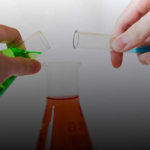Section 1
Preview this deck
radius trend
Front
Active users
0
All-time users
0
Favorites
0
Last updated
4 years ago
Date created
Mar 1, 2020
Cards (73)
Section 1
(50 cards)
radius trend
Determine the oxidation number of the following: Chlorine
-1
ionic radius trend
Determine the group, period, and block in which each of the following elements is found on the periodic table: [He]2s^2 2p^6
Group- 8 Period- 2 Block- P
Why do atoms bond?
To make themselves stable
s^2p^6
Ne, Ar, Kr, Rn, Uuo
Predict the reactivity of atom based on its electron configuration: Neon
not reactive
Which group on the periodic table is the least reactive?
noble gases, no available electrons to react with/valence shell full
Differentiate between an ionic and a covalent bond
Ionic steals, covalent shares
Write the formula for the following ionic components Sodium nitrate
NaNo3
Predict the reactivity of atom based on its electron configuration: Potassium
reactive
D
Boron Group
# of shells are found on
side
Write the formula for the following ionic components Sodium bromide
NaBr
I
Noble Gases
G
Oxygen Group
valence electrons are found on
top
H
Halogens
B
Alkaline Earth Metals
Determine the oxidation number of the following: Calcium
+2
What are the symbols for each of the elements with the following valence electron configuration? s^2
Be, Mg, Ca, Sr, Ba, Ra
Horizontal rows on the periodic table are called
periods
Determine the oxidation number of the following: Potassium
+1
s block, p block, d block, and f block?
E
Carbon Group
Name the following covalent compounds: As2O3
diarsenic trioxide
Name the following covalent compounds: XeF8
Xenon octafluoride
Write the formula for the following ionic components Calcium chlorate
Ca(ClO3)2
What are the symbols for each of the elements with the following valence electron configuration? s^2d^1
Sc, Y
K
actinide series
F
Nitrogen Group
How many electrons do atoms need in their valence shell to feel stable?
8
A
Alkali Metals
Vertical rows on the periodic table are called
groups or families
atom gains electrons, it has a ____ charge, and is called an ____
-1 negative, anion
electronegativity trend
ionization energy
Write the formula for the following ionic components Silver chromate
Ag2CrO4
Write the formula for the following ionic components Copper nitrate
CuNo3
Determine the group, period, and block in which each of the following elements is found on the periodic table: [Ar]4s^2 3d^10 4p^3
Group- 5 Period- 4 Block- P
Name the following ionic compounds:PbO
Lead (II) oxide
Determine the oxidation number of the following: Nitrogen
-3
atom loses electrons it has a ___ charge and is called a ___
+1 positive , cation
Name the following covalent compounds: CCl4
carbon tetrachloride
J
Lanthanide series
Name the following ionic compounds: Ca3(PO4)
Calcium phosphate
C
Transition Metals
Predict the reactivity of atom based on its electron configuration: Fluorine
reactive
Write the chemical formula for the following: Disulfur decafluoride
S2F10
Name the following ionic compounds:Al2(CO3)
Aluminum carbonate
Section 2
(23 cards)


